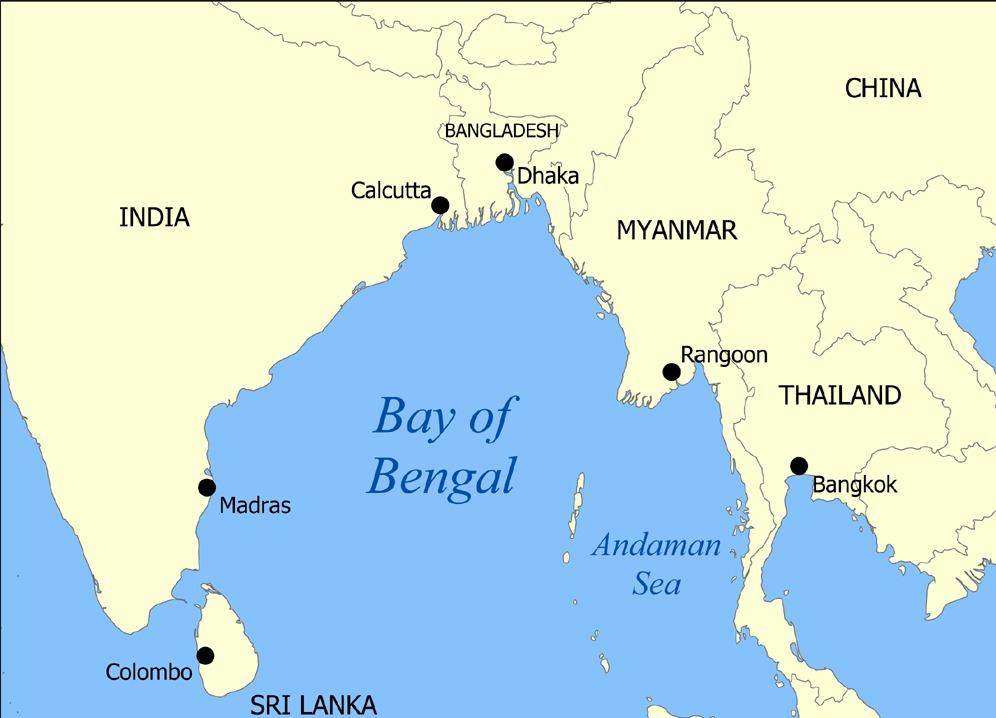Myanmar Blocks Indian Navy From Strategic Coco Islands Visit; Denies Chinese Spy Base Near Andamans

India’s neighbors are fast going into China’s embrace. Pakistan, Sri Lanka, Bangladesh, and Nepal have been befriending China for economic and strategic reasons. However, India still has a geographical advantage over China – the Malacca Strait – the chokehold for Beijing’s burgeoning Navy.
India is wary of China’s attempt to get a toehold in the South Asian region through ports and bases. But it is also concerned that Beijing has set up a listening post in Coco Island in Myanmar, located just 100 kilometers from India’s Andaman and Nicobar Island chain.
The Andaman and Nicobar Islands have several forward Indian naval and air bases.
What concerns the Indian strategic planners more is that China is using the facility on Coco Island to monitor the range and capability of the Indian Navy’s nuclear-powered ballistic missile submarines, a critical part of its strategic deterrence.
Coco Island is at the same latitude as the Rambilli naval base in Andhra Pradesh, where Indian nuclear submarines are based.
A listening post in Coco Island would help China to monitor radar emissions, radio frequencies, missile telemetry data, and submarine communication traffic emanating from India’s eastern seaboard. The installation could help Beijing to record signals from the Balasore missile test range in Odisha.
A SIGINT base will help Chinese experts to analyze telemetry data from India’s missile trials — including the Agni and K-4 series. The experts can glean information about the performance parameters of these missiles, including range, thrust vectoring, and re-entry characteristics. Moreover, such a base could provide forewarning about Indian naval deployments, enabling China to better calibrate its response.
In September, during a visit to Myanmar, Indian defense secretary Rajesh Kumar Singh was assured by the Junta that not a single Chinese national was present in the Coco Islands.
Singh was in Naypyitaw for the second annual defence dialogue with Major General Kyaw Ko Htike, Chief of Myanmar armed forces training, on September 25-27. However, the Myanmar Junta has not approved New Delhi’s request to allow its Navy to visit Coco Island to allay its concerns about a Chinese listening post.
The apprehension about China’s presence in the strategic Coco Islands has been raging since the early 1990s. But for a radar station, there has been no proof about such an intelligence-gathering facility.
In 2005, the then Indian Navy Chief Admiral Arun Prakash (retired) put to rest speculations that there was no Chinese military installation of any kind on Coco Island. The Myanmar junta had invited Indian defense officials to visit the island to verify the claims.
A couple of years ago, satellite pictures showed signs of military modernization and also the building of an airstrip to support an aircraft. The photos from January 2023 by Maxar Technologies, which specializes in satellite imagery, show renewed levels of construction activity on Great Coco.
Two new hangars, a new causeway, and an accommodation block were visible in the photographs. All these are in the vicinity of the lengthened 2,300-meter runway and radar station. If not China, Myanmar can conduct maritime surveillance from the island.

The Myanmar Junta has been isolated following the beginning of the civil war in the country. Beijing has routed huge investments in the country under the garb of the China-Myanmar Economic Corridor (CMEC).
CMEC links China’s Yunnan province to the Chinese-built Kyaukphyu deep-sea port in Myanmar’s Rakhine state, providing direct access to the Bay of Bengal.
This would give China access to the Indian Ocean Sea lanes while bypassing the Strait of Malacca. Moreover, the growing relations between the two countries also mean that Beijing can leverage its investments in the country to extract electronic intelligence gathered by Myanmar forces from Coco Island.
Bay of Bengal- New Theatre For India-China Rivalry?
Myanmar’s refusal to allow Indian Navy officials to inspect the island has brewed mistrust in New Delhi. China already has a base in Djibouti to monitor Red Sea and Arabian Sea traffic.
Its ports in Gwadar (Pakistan) and Hambantota (Sri Lanka) are suspected to have dual-use capabilities to facilitate Yuan-class submarines.

After Hambantota in Sri Lanka and Gwadar port in Pakistan in South Asia, China is reportedly building a submarine base in Bangladesh and another port in Myanmar.
The three Chinese-run ports in South Asia – Chittagong in Bangladesh, Hambantota in Sri Lanka, and Gwadar in Pakistan – are called a “triangle of death” encircling India.
Chinese submarines and warships will dock right under India’s nose very soon. Apart from supplying submarines to the Bangladesh Navy, China is constructing a port in Cox’s Bazar, which was inaugurated in 2023.
Bangladesh and Myanmar are key to facilitating China’s entry into the Bay of Bengal. This location lies on the sea lanes of communication that connect China, Japan, and Korea with the Middle East and Africa, through which half of the world trade passes.
The Bay of Bengal is the largest in the world, nestled between India to the East and Indonesia to the West; while Bangladesh, Sri Lanka, and Myanmar are the littoral countries. The region’s economic, diplomatic, and security importance attracts major powers in the East and the West (China, Japan, India, the US, and even Russia).
The interest in the region also stems from India’s strategic assets. China’s research vessel maintains a constant presence in the area, coinciding with major Indian missile tests.
In September 2025, the Chinese missile tracking vessel Yuan Wang 5, operated by China’s People’s Liberation Army Strategic Support Force, was in the Bay of Bengal. Outfitted with massive parabolic radar dishes, advanced telemetry receivers, and secure satellite communications, the ship can detect and record ballistic missile launches, satellite trajectories, and naval maneuvers at ranges of several thousand kilometers.
- Questions and Answers
- Opinion
- Motivational and Inspiring Story
- Technology
- Live and Let live
- Focus
- Geopolitics
- Military-Arms/Equipment
- Sicurezza
- Economy
- Beasts of Nations
- Machine Tools-The “Mother Industry”
- Art
- Causes
- Crafts
- Dance
- Drinks
- Film/Movie
- Fitness
- Food
- Giochi
- Gardening
- Health
- Home
- Literature
- Music
- Networking
- Altre informazioni
- Party
- Religion
- Shopping
- Sports
- Theater
- Health and Wellness
- News
- Culture

